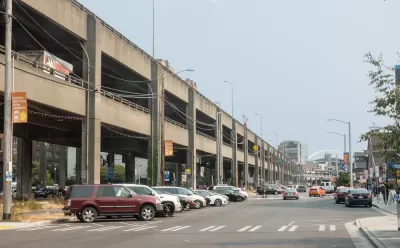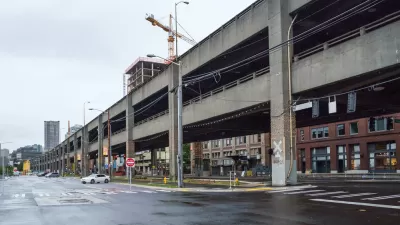Now that Seattle has proven they don't need the new Highway 99 tunnel that will replace the Alaskan Way Viaduct, will enough people use it in the future to cover the costs of construction, operation, and maintenance?

"The Washington State Department of Transportation (WSDOT) is spending $4.4 million begging you to drive under Downtown Seattle," reports Ryan Packer.
WSDOT might have reason to worry that commuters won't use the new Highway 99 tunnel that went $223 million over budget. Commuters managed without the Alaskan Way Viaduct or the yet-to-be-opened tunnel for most of this month.
In response, the WSDOT has launched a marketing campaign, "with expensive TV spots and billboards wants to ensure that the new tunnel is full of motorists when it opens."
Still, some of the WSDOT's interest in the success of the tunnel's success is connected to the tolling that will help finance the project. "WSDOT’s financing plan (even before the overruns climbed to $223 million with no sign of stopping) relies on $200 million in tolling profits," according to Packer. "That tolling largesse is extracted from more than $1 billion in tolls projected over the next 25 years, due to considerable tolling overhead and maintenance and financing costs."
FULL STORY: It’s a Thing that WSDOT Is Spending $4.4 Million Begging People to Drive

Maui's Vacation Rental Debate Turns Ugly
Verbal attacks, misinformation campaigns and fistfights plague a high-stakes debate to convert thousands of vacation rentals into long-term housing.

Planetizen Federal Action Tracker
A weekly monitor of how Trump’s orders and actions are impacting planners and planning in America.

San Francisco Suspends Traffic Calming Amidst Record Deaths
Citing “a challenging fiscal landscape,” the city will cease the program on the heels of 42 traffic deaths, including 24 pedestrians.

Defunct Pittsburgh Power Plant to Become Residential Tower
A decommissioned steam heat plant will be redeveloped into almost 100 affordable housing units.

Trump Prompts Restructuring of Transportation Research Board in “Unprecedented Overreach”
The TRB has eliminated more than half of its committees including those focused on climate, equity, and cities.

Amtrak Rolls Out New Orleans to Alabama “Mardi Gras” Train
The new service will operate morning and evening departures between Mobile and New Orleans.
Urban Design for Planners 1: Software Tools
This six-course series explores essential urban design concepts using open source software and equips planners with the tools they need to participate fully in the urban design process.
Planning for Universal Design
Learn the tools for implementing Universal Design in planning regulations.
Heyer Gruel & Associates PA
JM Goldson LLC
Custer County Colorado
City of Camden Redevelopment Agency
City of Astoria
Transportation Research & Education Center (TREC) at Portland State University
Jefferson Parish Government
Camden Redevelopment Agency
City of Claremont





























